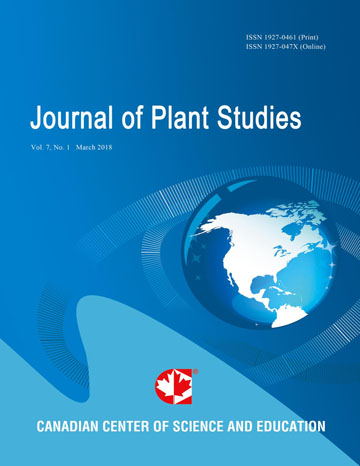Characterization of a Differentially Expressed Phenylalanine Ammonia-Lyase Gene From Banana Induced During Mycosphaerella fijiensis Infection
- Javier Alvarez
- Hector Rodriguez
- Esperanza Rodriguez-Arango
- Zulma Monsalve
- Juan Morales O.
- Rafael Arango I
Abstract
Black leaf streak, caused by the fungus Mycosphaerella fijiensis, is the most important disease affecting the commercial production of banana and plantain in the world. Phenylalanine-ammonia-lyase (PAL) is an enzyme found in a large group of plants, which catalyzes the first reaction in the metabolic pathway of phenylpropanoid compounds. Phenylphenalenons, a type of phenylpropanoid metabolites, have been found in banana and have been suggested to be involved in resistance against pathogens. Thus, PAL might be an important enzyme in the plant-pathogen interaction. In this work, PAL cDNAs were isolated, and sequenced completely or partially, from different banana cultivars such as ‘Calcutta 4’ (Musaacuminata ssp. burmannicoides), ‘Grain Nain’ (AAA, Cavendish subgroup), ‘Yangambi Km5’ (AAA, Ibota subgroup) and ‘Williams’ (AAA, Cavendish subgroup). The obtained sequences were compared, and their secondary and three-dimensional structures of their deduced protein sequences were modeled. Several structural differences between cultivars were found. Additionally, expression analysis showed marked differences in the expression of PAL depending on the cultivar. In particular, PAL from black leaf streak- resistant ‘Calcutta 4’ showed highest expression in the early hours of infection in contrast to the susceptible ‘Williams’ cultivar.
- Full Text:
 PDF
PDF
- DOI:10.5539/jps.v2n2p35
Index
- AGRICOLA
- CAB Abstracts
- CABI
- CAS (American Chemical Society)
- CNKI Scholar
- Elektronische Zeitschriftenbibliothek (EZB)
- Excellence in Research for Australia (ERA)
- Google Scholar
- JournalTOCs
- Mendeley
- Open policy finder
- Scilit
- Standard Periodical Directory
- Technische Informationsbibliothek (TIB)
- WorldCat
Contact
- Joan LeeEditorial Assistant
- jps@ccsenet.org
